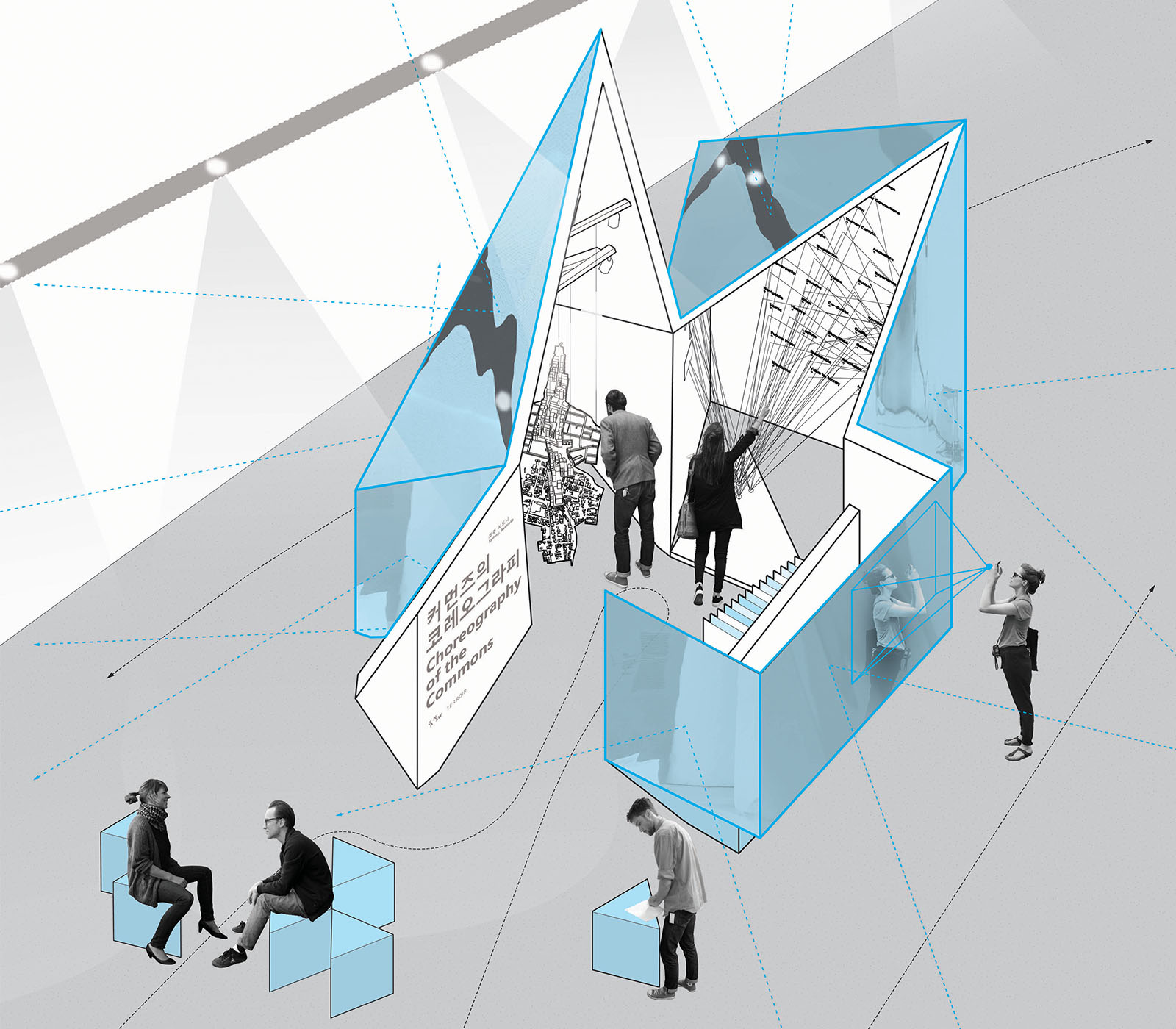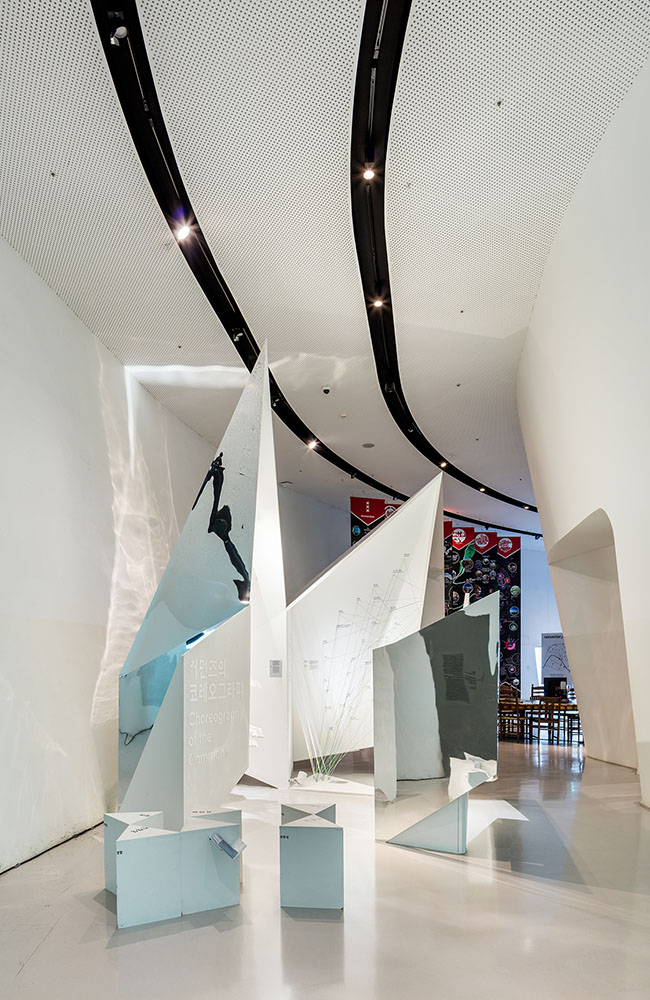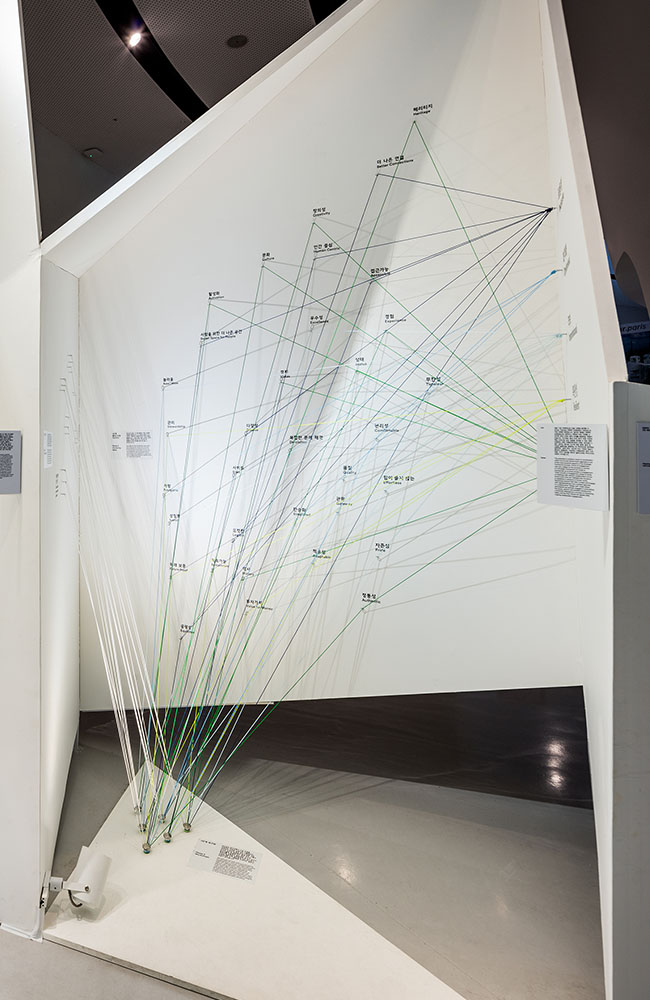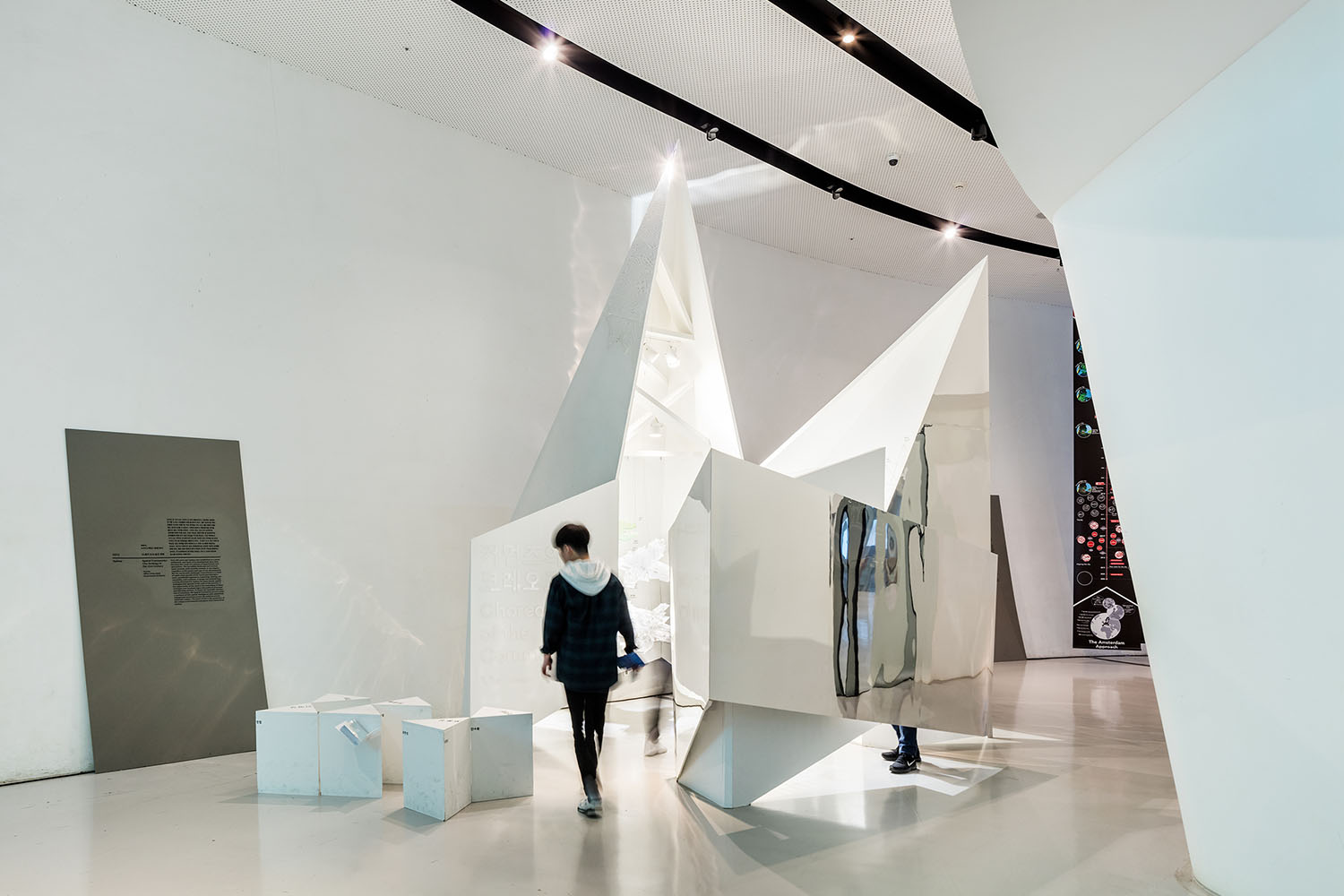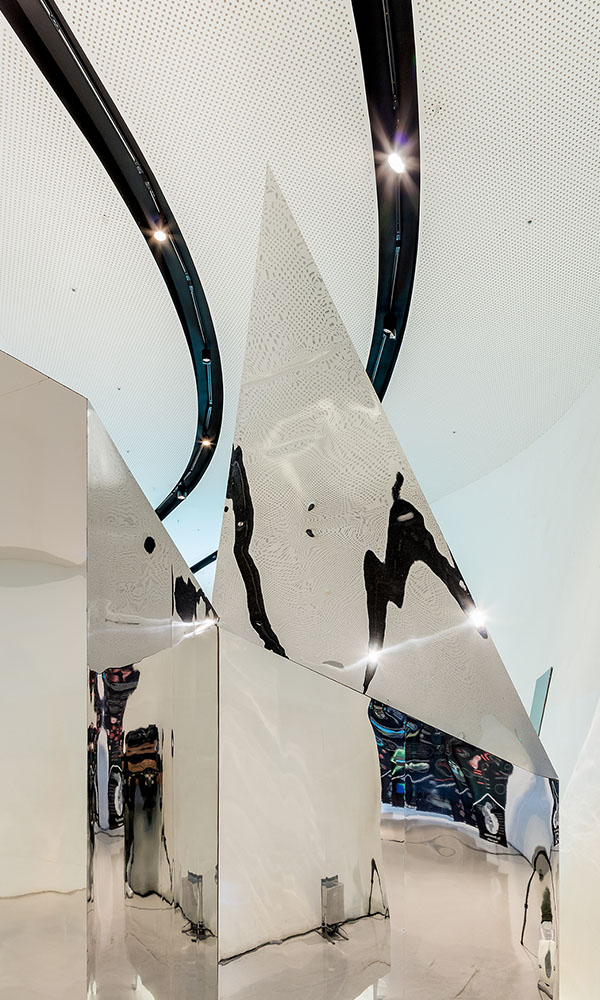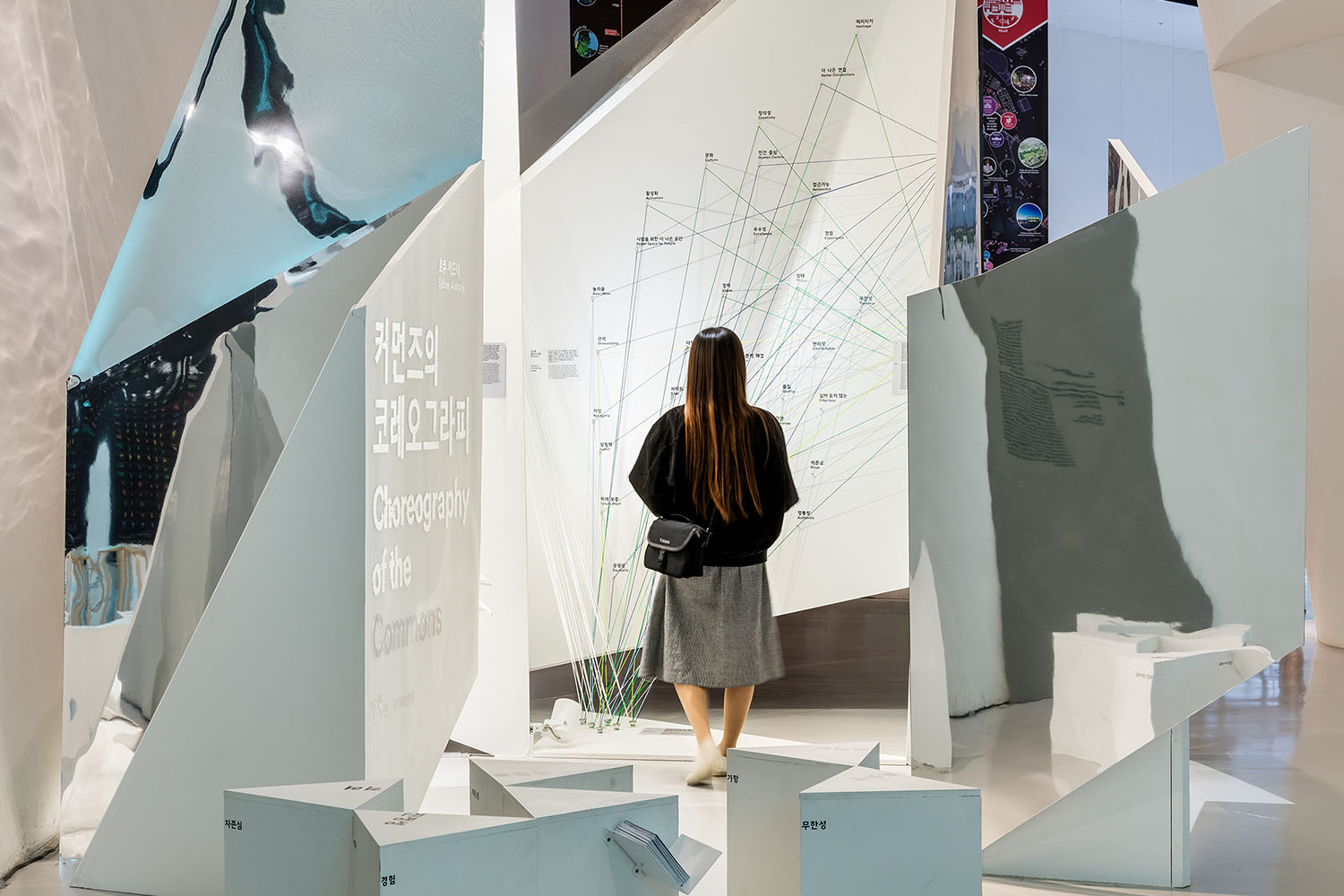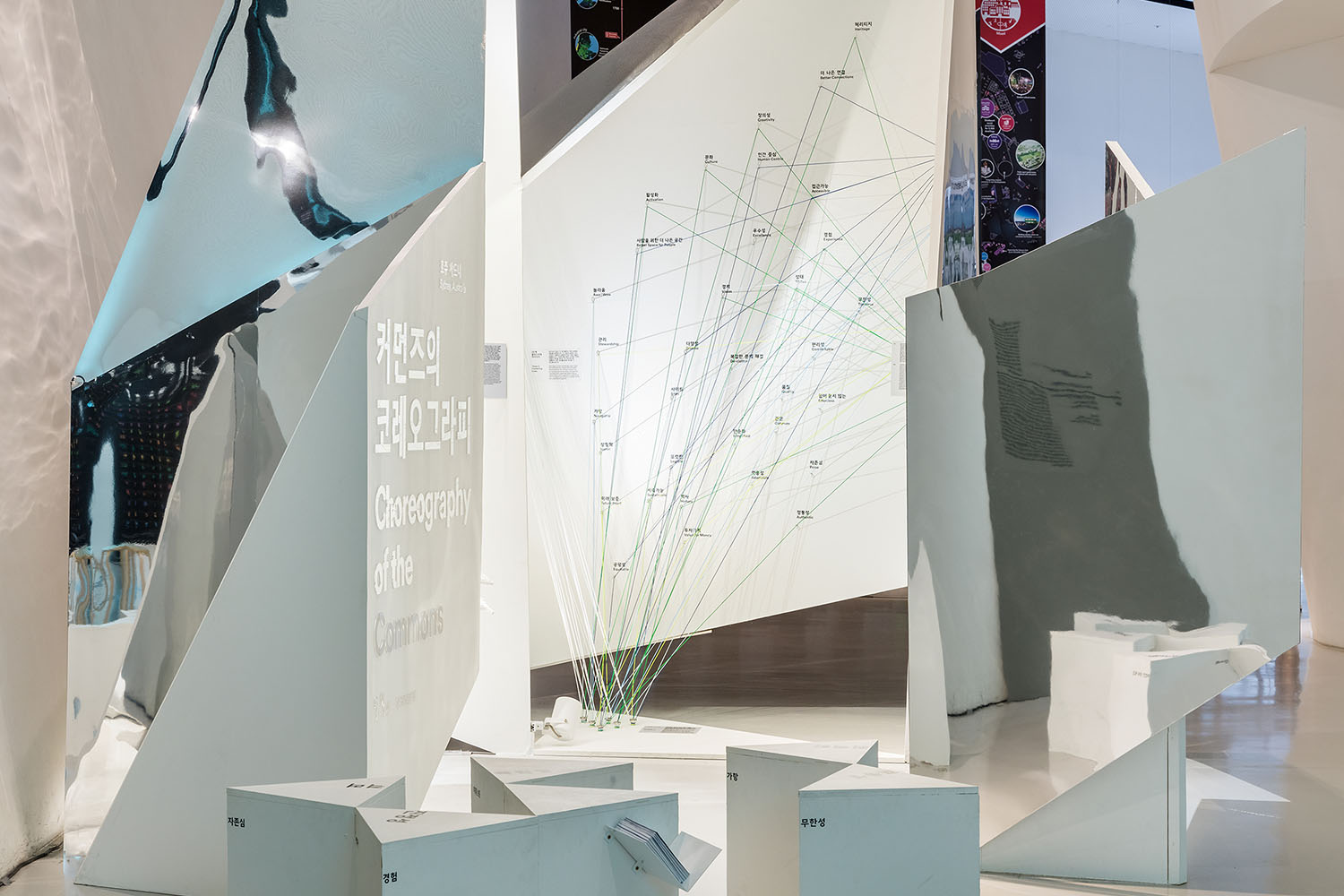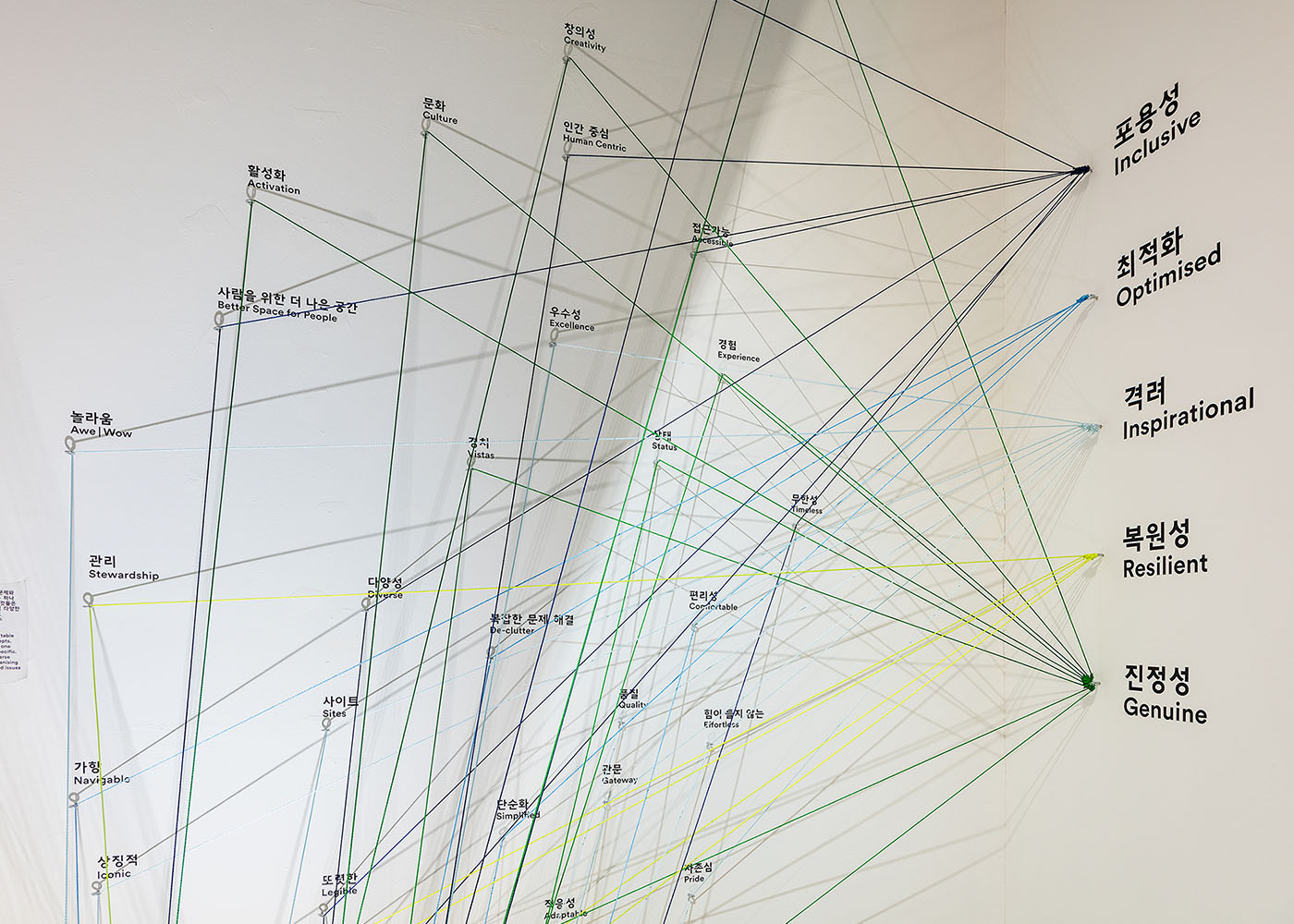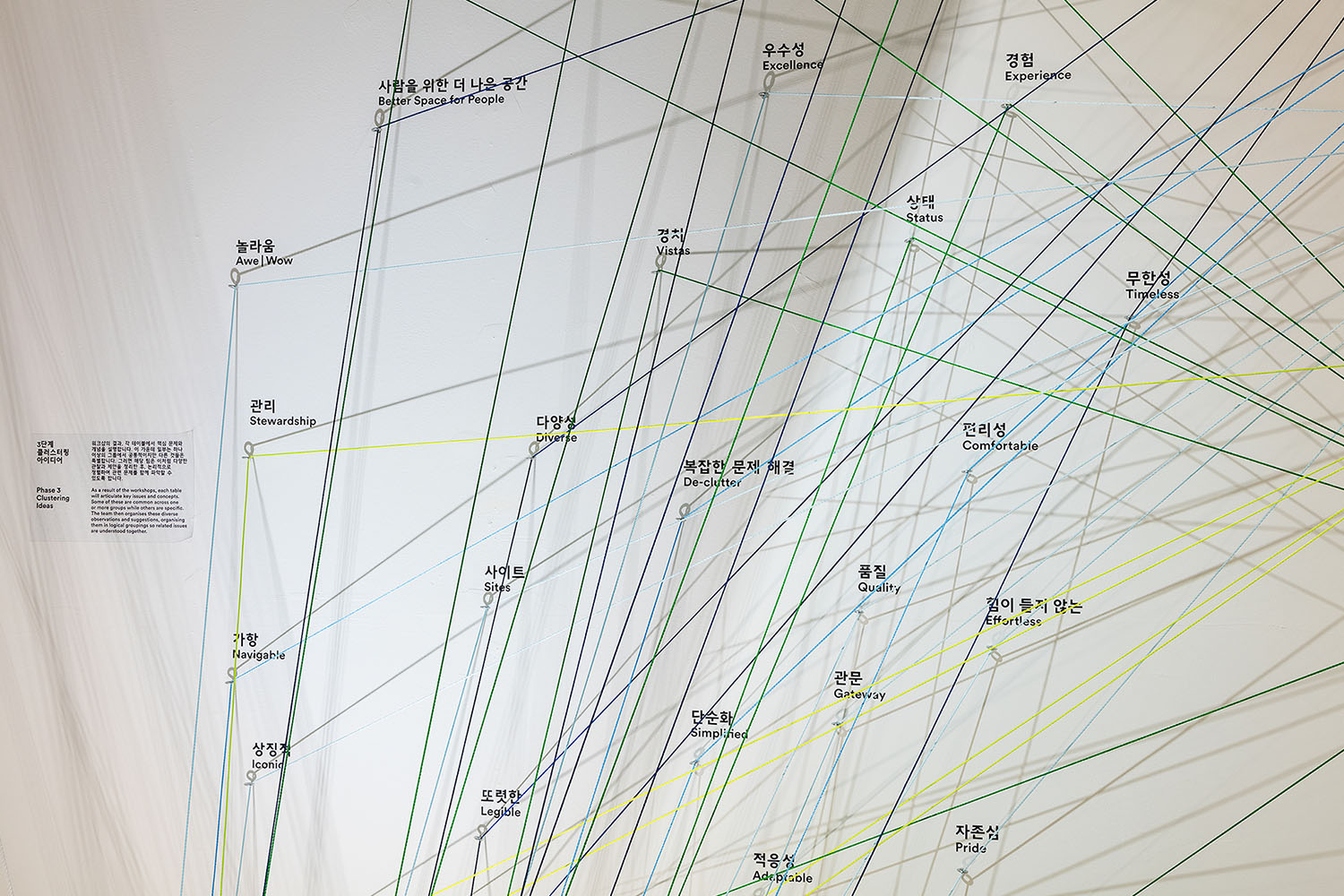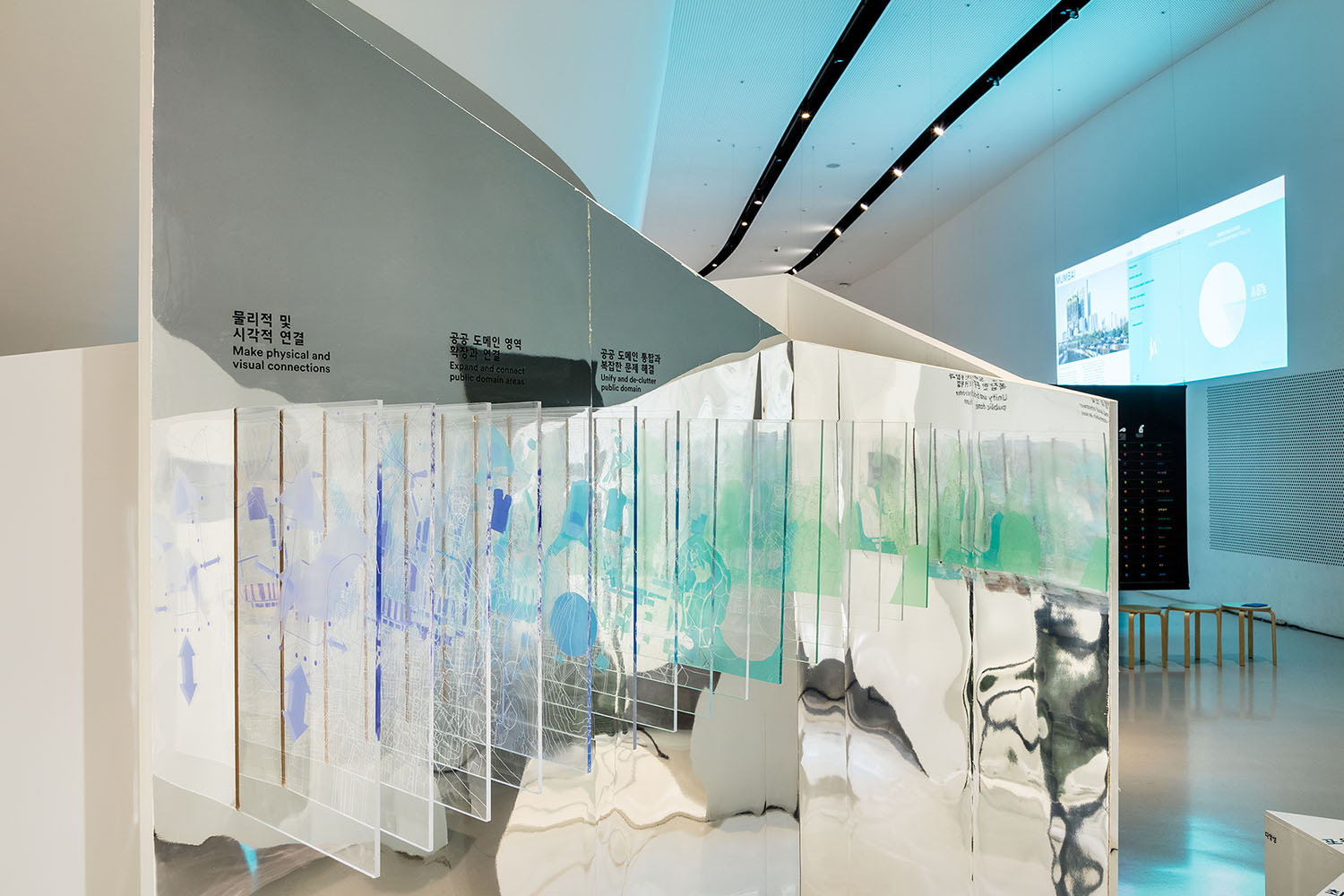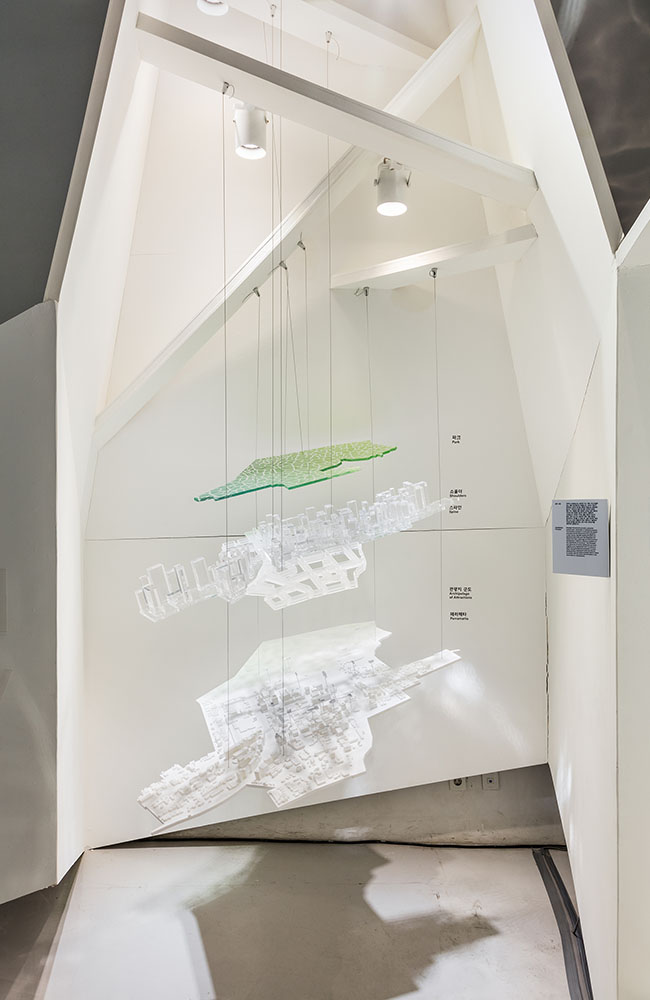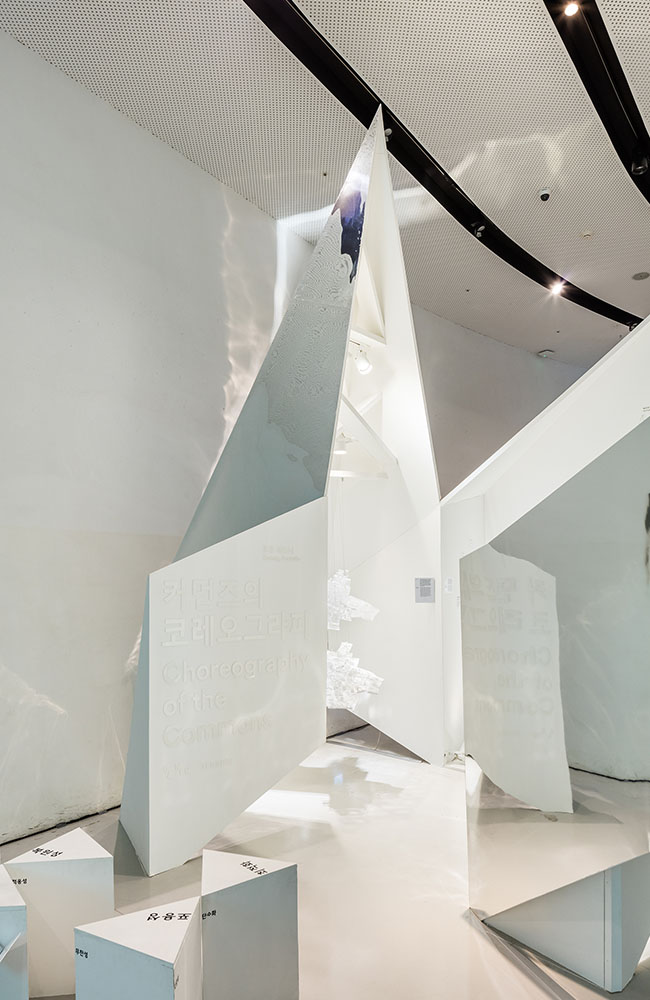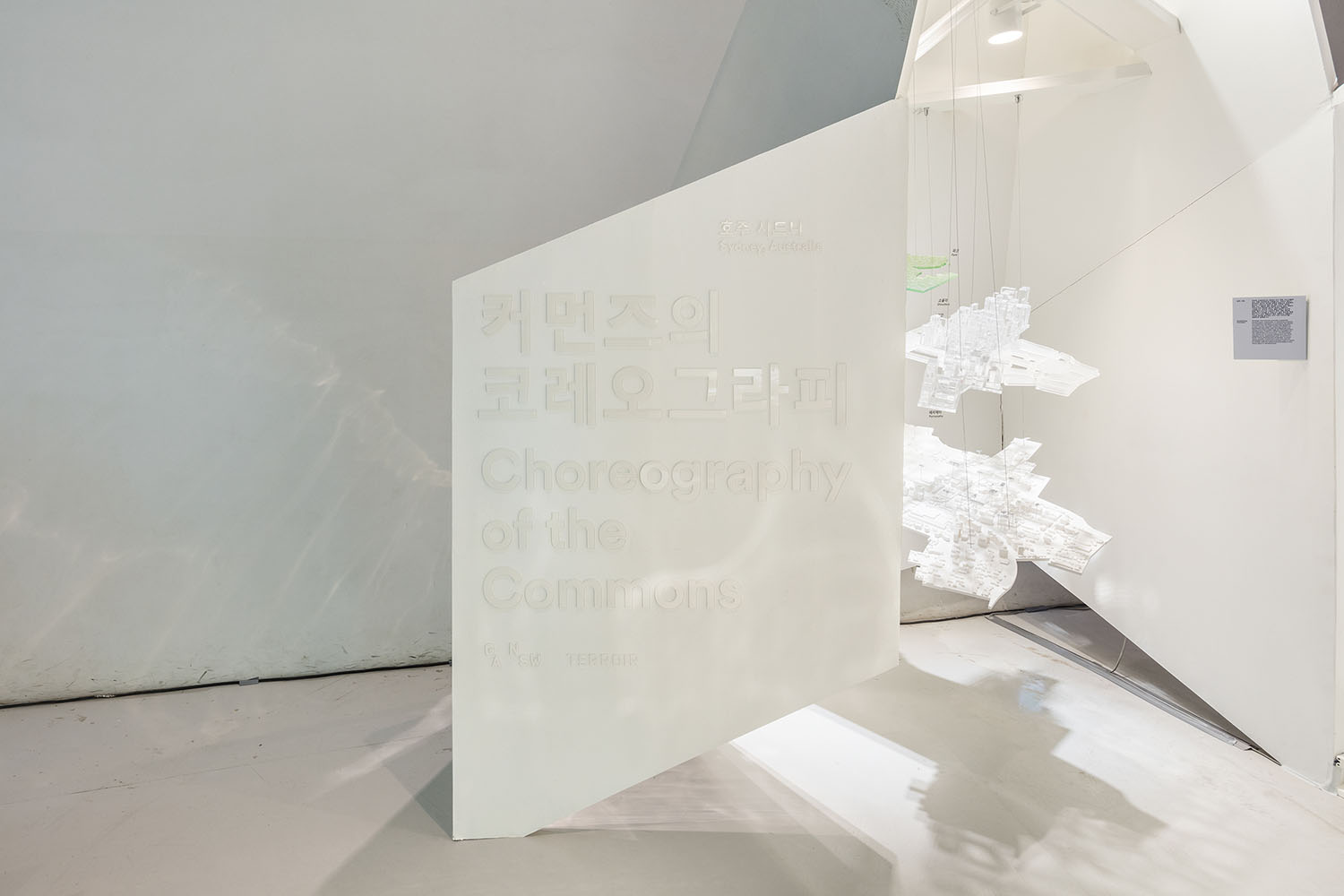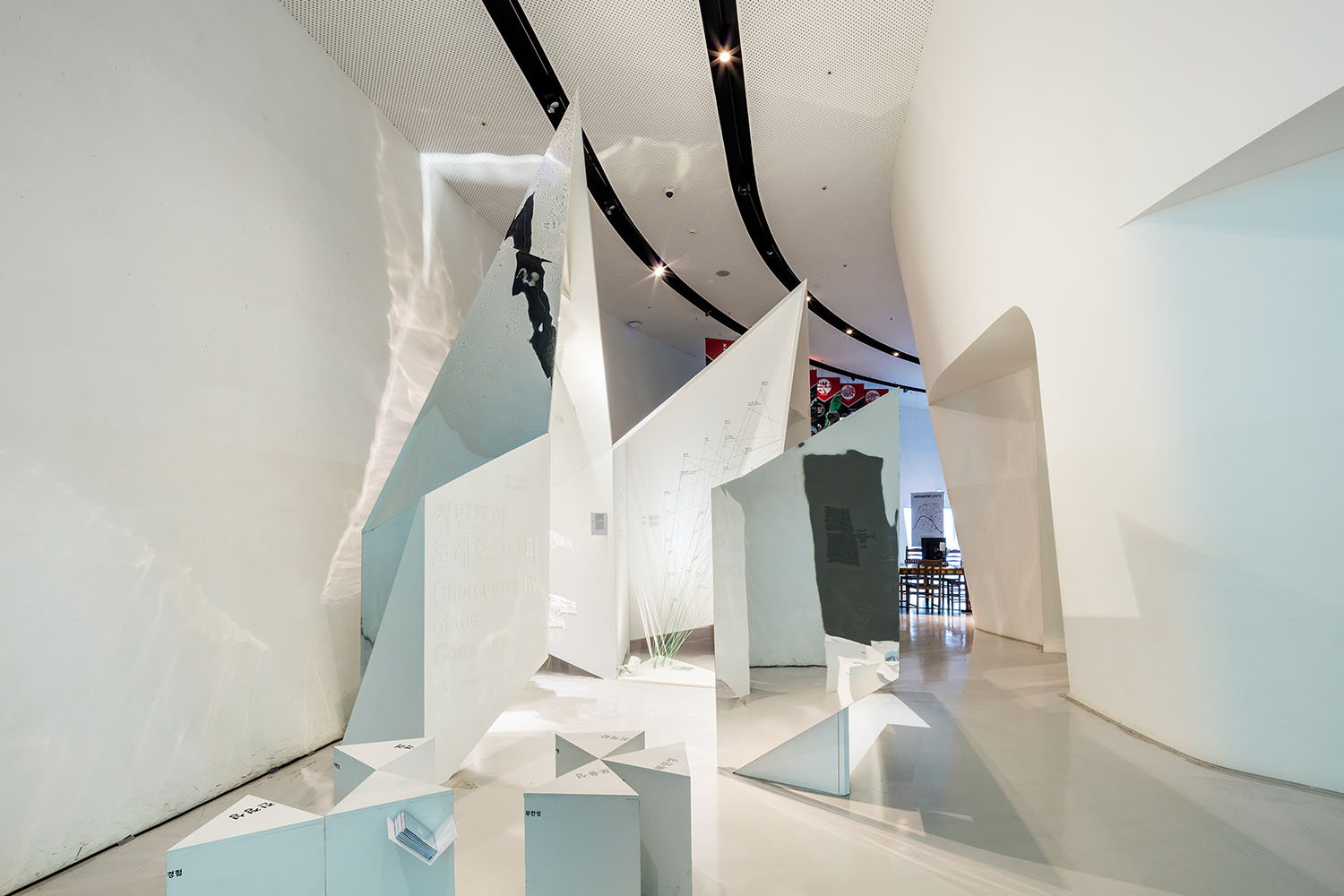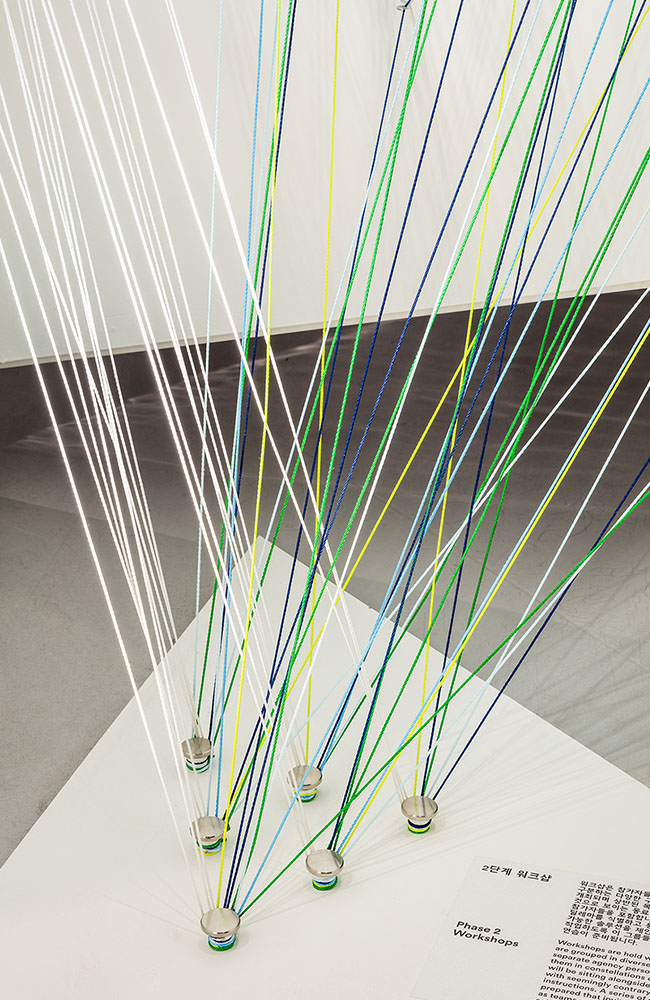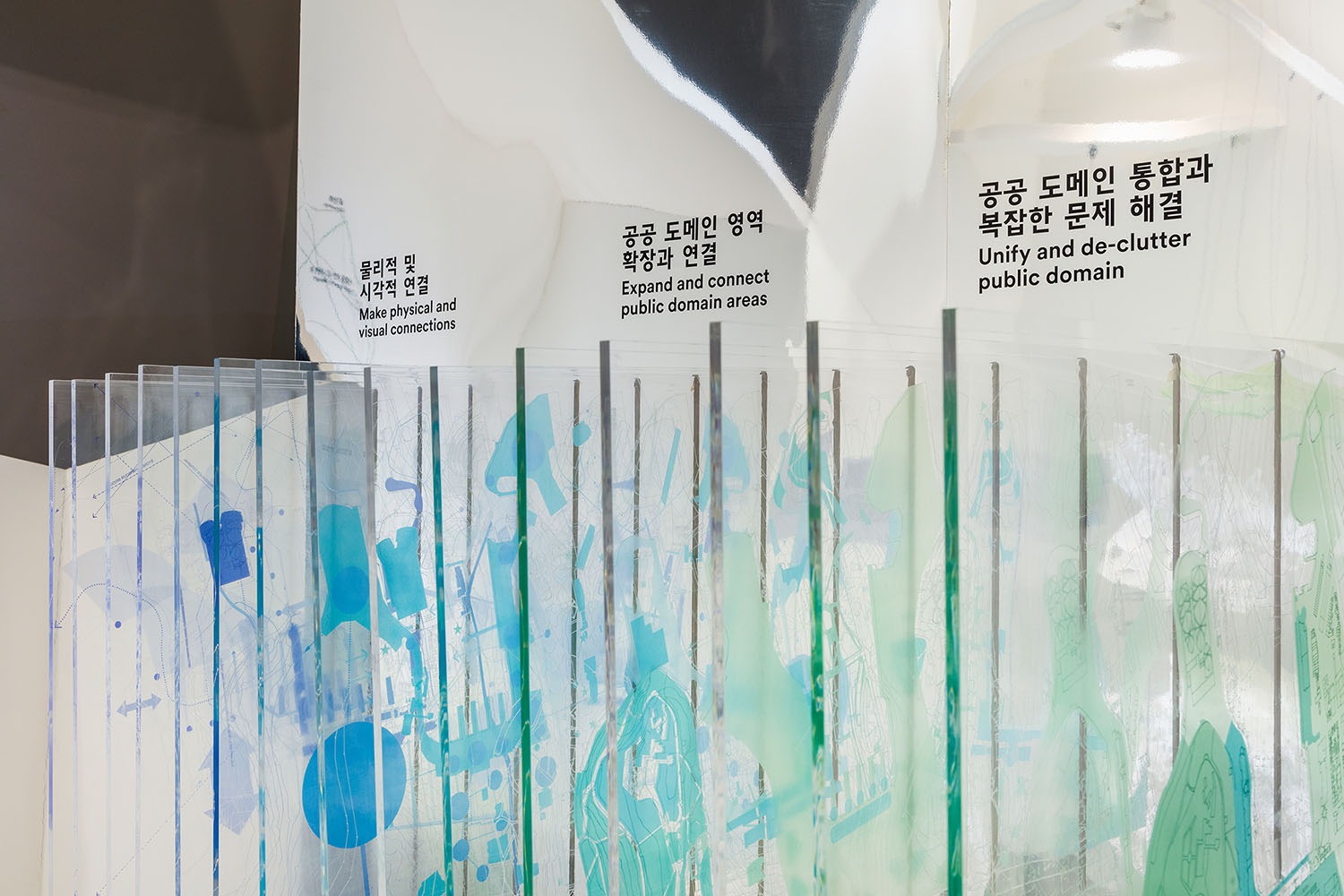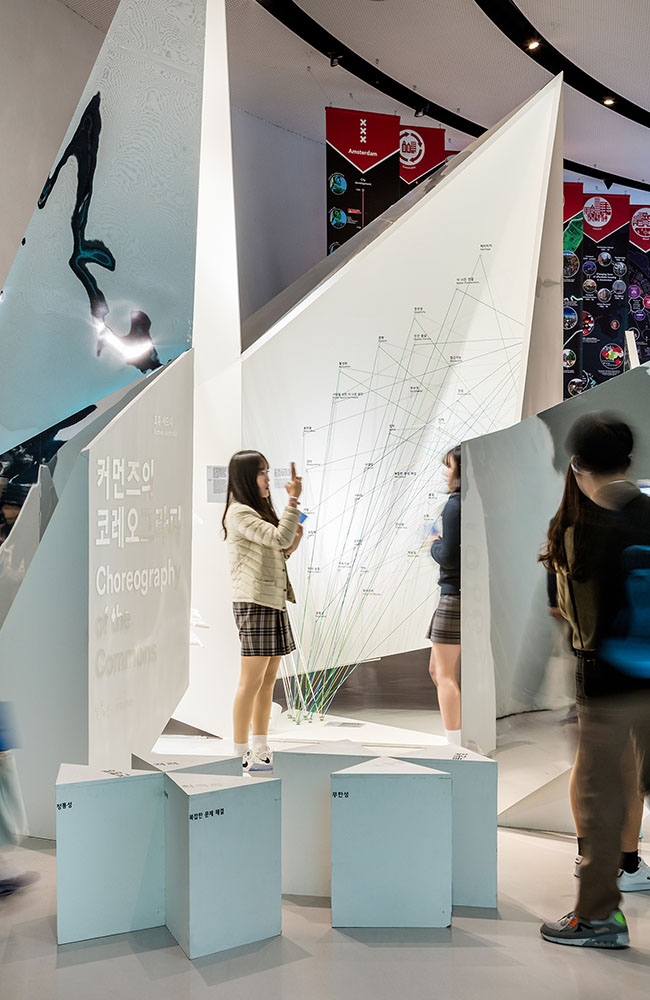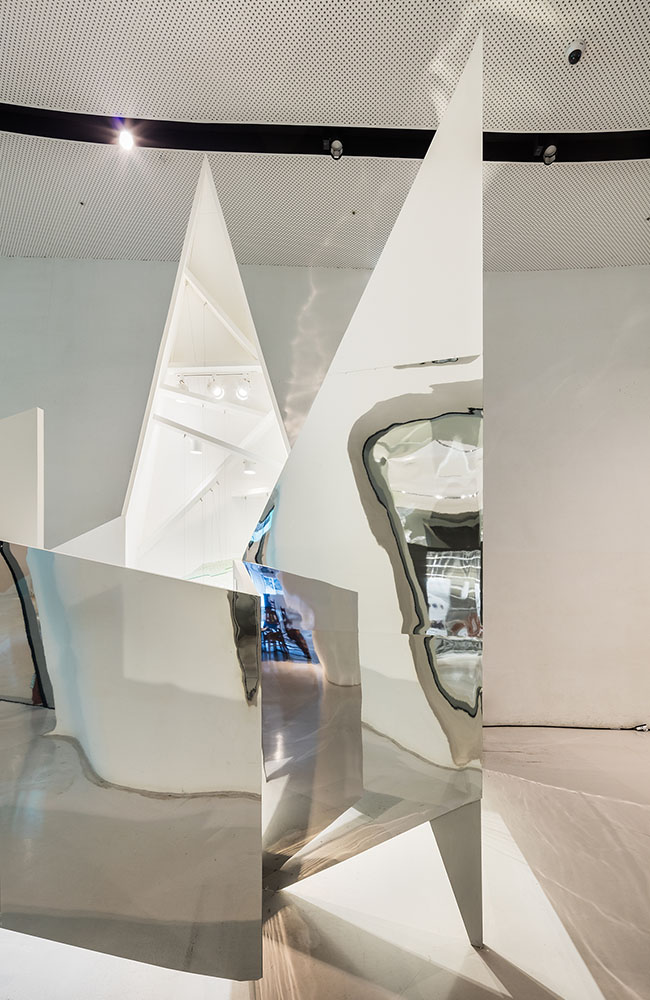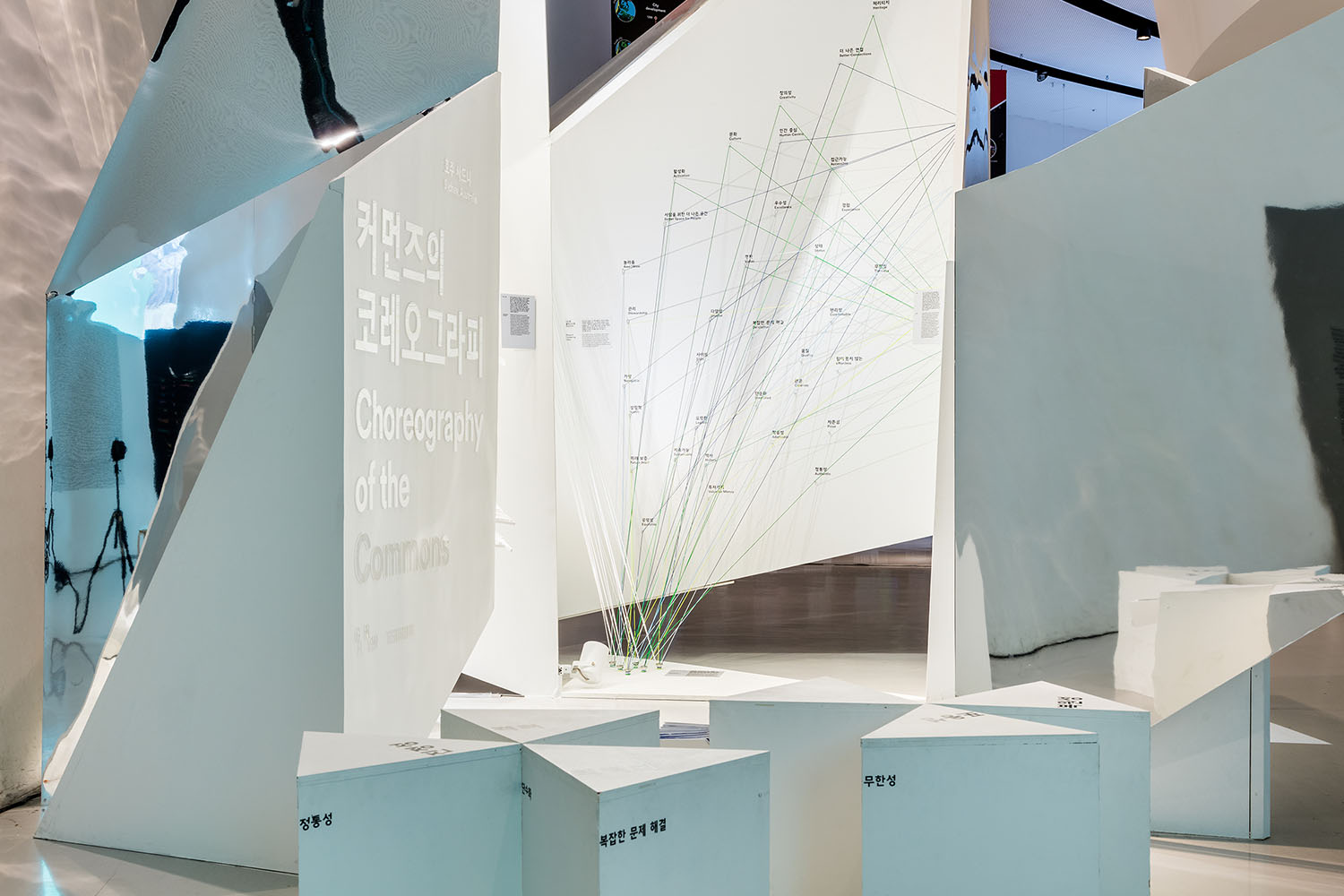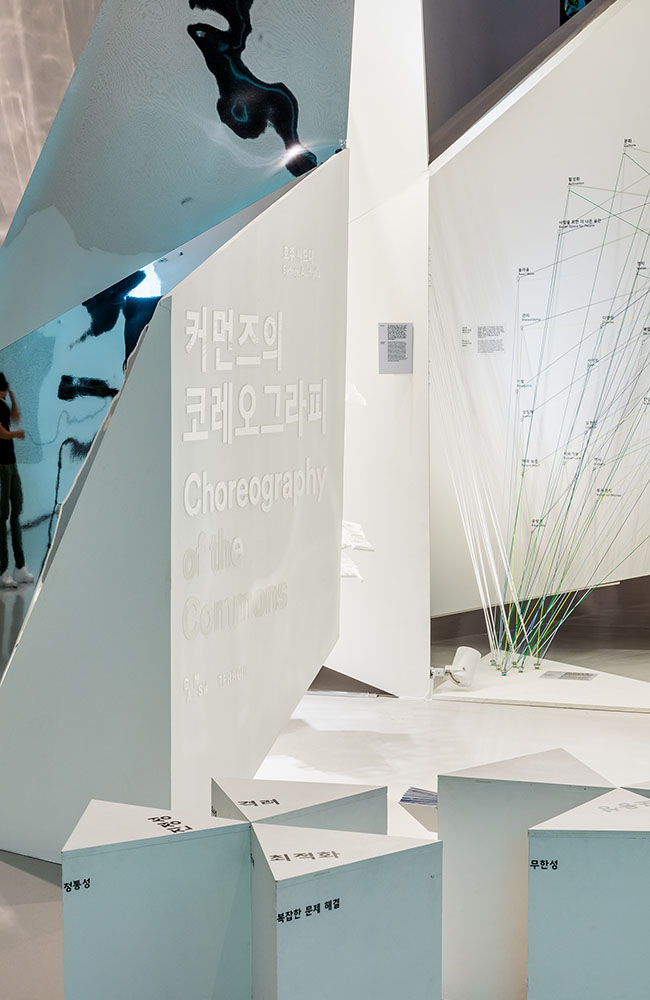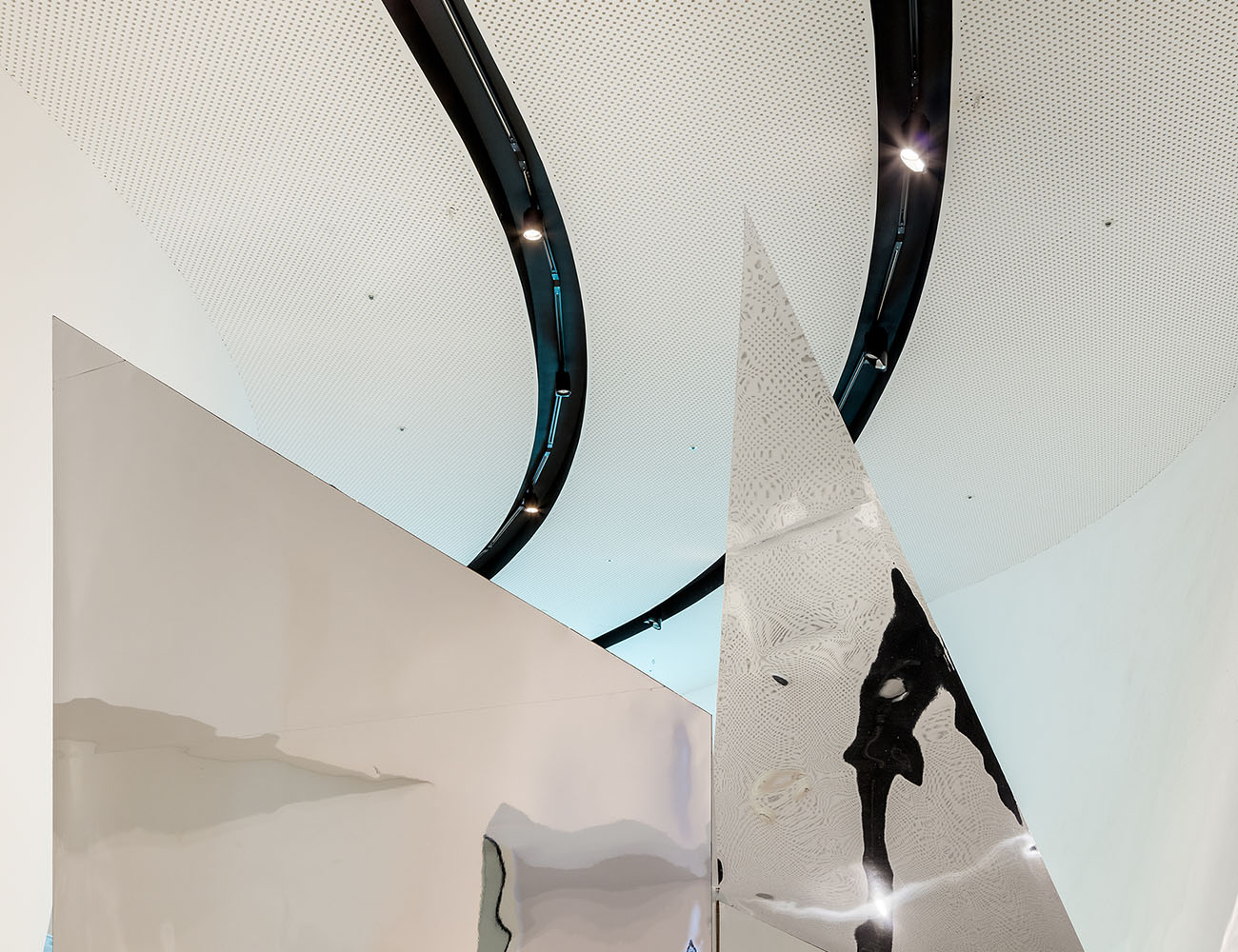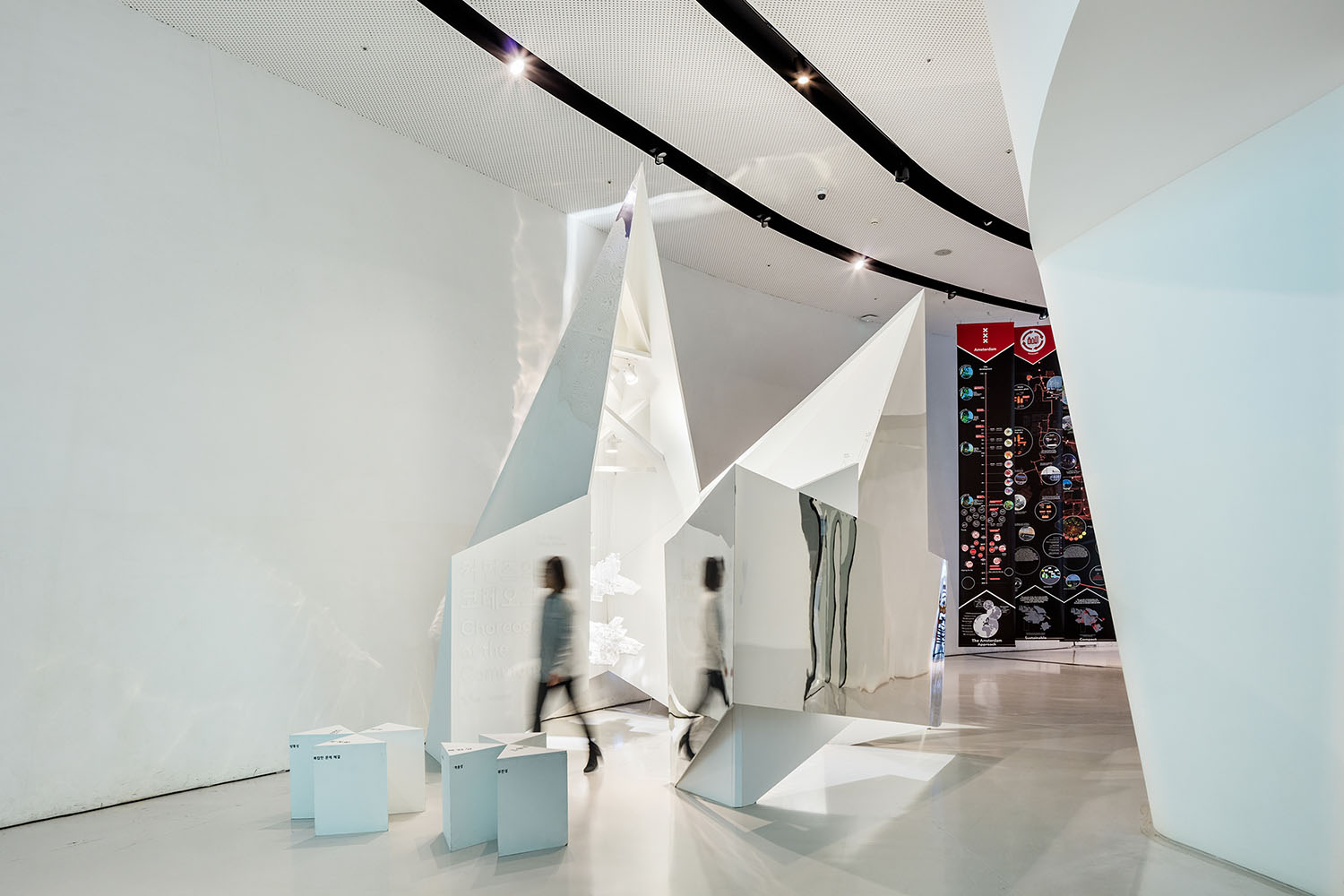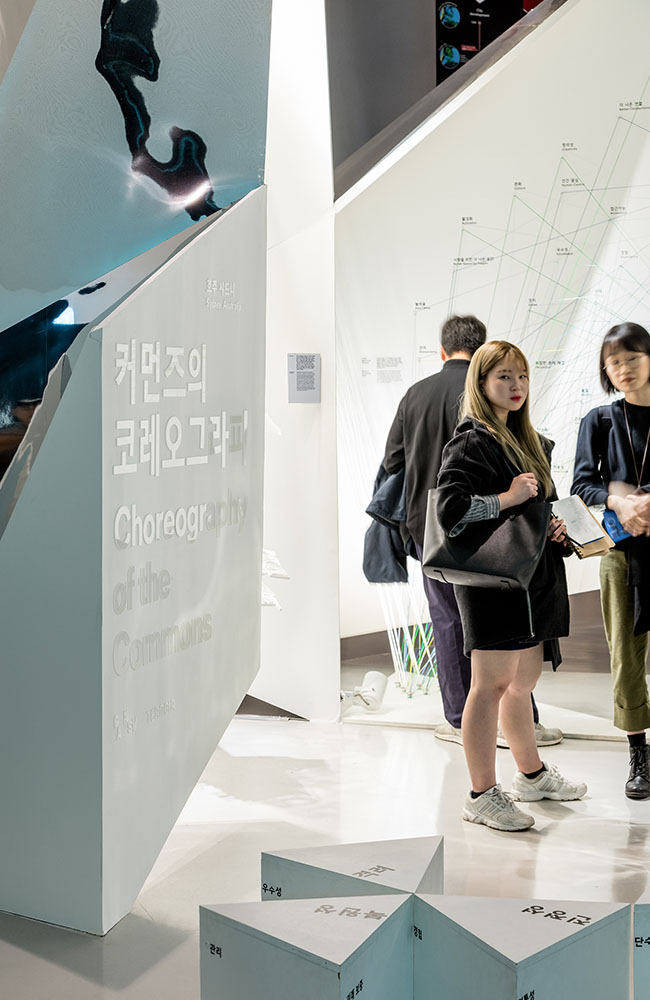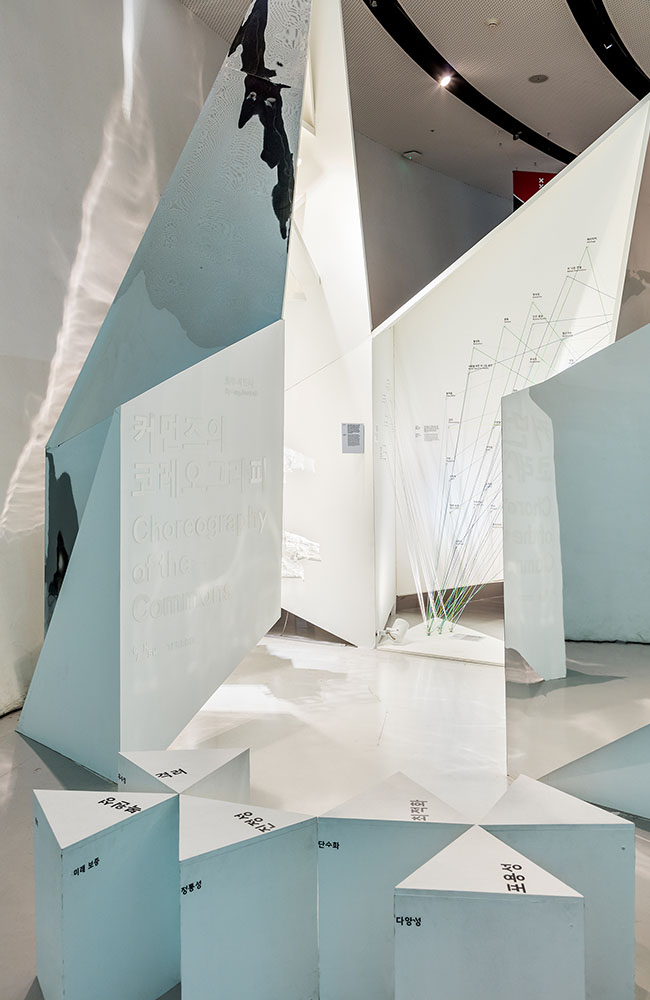-
Distortion and clarification at multiple scales
Seoul Biennale
The inaugural Seoul Biennale of Architecture and Urbanism (2017), co-curated by Alejandro Zaera-Polo and Hyungmin Pai, was conceived as a distinct addition to the international biennale program with its focus on cities and systems, over the novelty of objects. The Biennale was split into two halves – a Cities exhibition in the Dongdaemun Design Plaza (DDP) designed by Zaha Hadid and a companion event located to the west of the DDP, in the Donuimun Museum Village.
The curators selected TERROIR to design the Sydney installation in the Cities Exhibition. Working with the Government Architect of New South Wales (GANSW) we agreed to use the exhibition as an opportunity to communicate the development of the Strategic Design Framework that we had developed with GANSW through a number of projects. At its core, the Framework is a process to reach consensus across government agencies when dealing with high level ambitions for a particular precinct or site. Translating this to the site of the Seoul Biennale, the interior of Dongdaemun Design Plaza (DDP), provided a sharp contrast between the detailed and pedagogic nature of the Framework and the abstraction and monumentality of the context – the smooth frictionless lines of the DDP interior, a space designed for exhibition but where all surfaces are canted, angled or ramped. The object navigates this context to provide an engaging dialogue with the DDP and an installation that explains strategic work to a broad audience.
- TYPE Exhibitions
- LOCATION Seoul | KP
- YEAR 2017
APPROACH
In response to this disjunction between the content to be shown and the dilemma of exhibition in the DDP, we elected to organise the exhibition through an object which mediated these two conditions. Developed from an exercise in folding a single sheet, the display surfaces formed a mute container when seen from the exterior. The container was clad in mirror, slicing the reflection of the curved Hadid geometry into shards, thus fusing the two objects as one. Viewers could also see themselves in the mirror, thus placing individuals in the space between the two objects. Behind the mirrors, a focused place to view the exhibition was created to display the three core elements of the Spatial Framework process: mapping and drawing, agreeing values, and determining principles. Drawings, diagrams and models exhibiting these three populate an interior that remains open above thus bringing a fragmented DDP into the exhibition and juxtaposing the two contexts.
